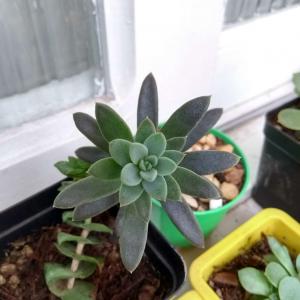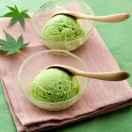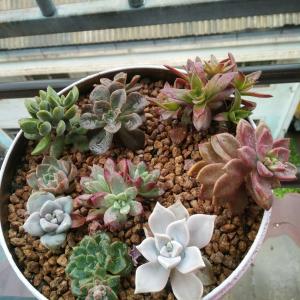文章
Miss Chen
2018年05月07日

Description: This biennial plant is about 1–2½' tall, branching occasionally. The stems have a tendency to zigzag between leaves; they are light green, terete, and both short-pubescent and hairy. The alternate leaves are up to 6" long and 6" across. The lower leaves are pinnately cleft into 5 lobes; they are longer than wide, dentate along their margins, and slightly hairy. The earliest of these lower leaves have patches of greyish white or light green toward the middle of their upper surfaces, providing them with a water-stained appearance. The middle to upper leaves are orbicular and cleft into 5 lobes, resembling maple leaves; they are dentate along their margins and slightly hairy. The petioles of these leaves are rather long and stout; they are both short-pubescent and sparsely hairy.
The upper stems terminate in floppy cymes of flowers. These flowers are about ¾" across when they are fully open, becoming more erect while in bloom. Each flower has a lavender or pale purplish pink corolla that consists of 5 spreading petals. At the base of this corolla, there is a hairy green calyx with 5 narrowly triangular teeth. Between each pair of teeth on the calyx, there is a short appendage that is strongly recurved. Toward the center of the corolla, there are 5 stamens with light to medium brown anthers and a slender white style that is divided toward its apex. The peduncles and pedicels of the cymes are light green, terete, and both short-pubescent and hairy; the peduncles are up to 6" long, while the pedicels are up to 1" long. The blooming period occurs from late spring to early summer, lasting about 3 weeks. Each flower is replaced by a 2-chambered capsule containing several seeds. The root system consists of a taproot. This plant spreads by reseeding itself.

Cultivation: The preference is light dappled shade, moist to mesic conditions, and a rich loamy soil containing abundant organic matter. Sometimes this plant succumbs to fusarium wilt and other wilt-causing fungi. In spite of its biennial habit, it is possible to maintain this plant in a woodland flower garden as it reseeds itself readily.
Range & Habitat: The native Great Waterleaf occurs occasionally in central and northern Illinois; it is less common or absent in the southern and extreme NW areas of the state (see Distribution Map). Habitats include moist to mesic deciduous woodlands, woodland borders, areas adjacent to woodland paths, shaded or partially shaded seeps, and shaded or partially shaded areas along rivers. This woodland wildflower begins to bloom after the leaves of the trees have partially developed.

Faunal Associations: The nectar and pollen of the flowers attract various kinds of bees, including honeybees, bumblebees, mason bees (Hoplitis spp., Osmia spp.), digger bees (Synhalonia spp.), Andrenid bees (Andrena spp.), and Halictid bees (Lasioglossum spp., etc.). An Andrenid bee, Andrena geranii, is a specialist pollinator (oligolege) of Hydrophyllum spp. Other insects that visit the flowers include Syrphid flies, dance flies (Empis spp.), butterflies, and skippers. Except for these flower visitors, surprisingly little appears to be known about floral-fauna relationships for this species. White-Tailed Deer probably browse on the foliage.
Photographic Location: A woodland flower garden on the campus of the University of Illinois in Urbana, Illinois, and a deciduous woodland at Pine Hills State Nature Preserve in west-central Indiana.

Comments: Great Waterleaf (Hydrophyllum appendiculatum) is one of the more common Hydrophyllum spp. within the state and its flowers are the most attractive. This species has hairy stems and calyxes, and some of its leaves resemble maple leaves. A distinctive characteristic consists of the small recurved appendages between the teeth of its calyx, hence the "appendiculatum" in the scientific name. Other Hydrophyllum spp. lack these strongly recurved appendages and they have less showy flowers. Virginia Waterleaf (Hydrophyllum virginiana) and Canada Waterleaf (Hydrophyllum canadense) have less hairy stems, while Large-Leaved Waterleaf (Hydrophyllum macrophyllum) lacks cleft orbicular leaves that resemble maple leaves. The leaves of this latter species are always longer than broad, and they are pinnately divided to an even greater extent than the lower leaves of Great Waterleaf.
The upper stems terminate in floppy cymes of flowers. These flowers are about ¾" across when they are fully open, becoming more erect while in bloom. Each flower has a lavender or pale purplish pink corolla that consists of 5 spreading petals. At the base of this corolla, there is a hairy green calyx with 5 narrowly triangular teeth. Between each pair of teeth on the calyx, there is a short appendage that is strongly recurved. Toward the center of the corolla, there are 5 stamens with light to medium brown anthers and a slender white style that is divided toward its apex. The peduncles and pedicels of the cymes are light green, terete, and both short-pubescent and hairy; the peduncles are up to 6" long, while the pedicels are up to 1" long. The blooming period occurs from late spring to early summer, lasting about 3 weeks. Each flower is replaced by a 2-chambered capsule containing several seeds. The root system consists of a taproot. This plant spreads by reseeding itself.

Cultivation: The preference is light dappled shade, moist to mesic conditions, and a rich loamy soil containing abundant organic matter. Sometimes this plant succumbs to fusarium wilt and other wilt-causing fungi. In spite of its biennial habit, it is possible to maintain this plant in a woodland flower garden as it reseeds itself readily.
Range & Habitat: The native Great Waterleaf occurs occasionally in central and northern Illinois; it is less common or absent in the southern and extreme NW areas of the state (see Distribution Map). Habitats include moist to mesic deciduous woodlands, woodland borders, areas adjacent to woodland paths, shaded or partially shaded seeps, and shaded or partially shaded areas along rivers. This woodland wildflower begins to bloom after the leaves of the trees have partially developed.

Faunal Associations: The nectar and pollen of the flowers attract various kinds of bees, including honeybees, bumblebees, mason bees (Hoplitis spp., Osmia spp.), digger bees (Synhalonia spp.), Andrenid bees (Andrena spp.), and Halictid bees (Lasioglossum spp., etc.). An Andrenid bee, Andrena geranii, is a specialist pollinator (oligolege) of Hydrophyllum spp. Other insects that visit the flowers include Syrphid flies, dance flies (Empis spp.), butterflies, and skippers. Except for these flower visitors, surprisingly little appears to be known about floral-fauna relationships for this species. White-Tailed Deer probably browse on the foliage.
Photographic Location: A woodland flower garden on the campus of the University of Illinois in Urbana, Illinois, and a deciduous woodland at Pine Hills State Nature Preserve in west-central Indiana.

Comments: Great Waterleaf (Hydrophyllum appendiculatum) is one of the more common Hydrophyllum spp. within the state and its flowers are the most attractive. This species has hairy stems and calyxes, and some of its leaves resemble maple leaves. A distinctive characteristic consists of the small recurved appendages between the teeth of its calyx, hence the "appendiculatum" in the scientific name. Other Hydrophyllum spp. lack these strongly recurved appendages and they have less showy flowers. Virginia Waterleaf (Hydrophyllum virginiana) and Canada Waterleaf (Hydrophyllum canadense) have less hairy stems, while Large-Leaved Waterleaf (Hydrophyllum macrophyllum) lacks cleft orbicular leaves that resemble maple leaves. The leaves of this latter species are always longer than broad, and they are pinnately divided to an even greater extent than the lower leaves of Great Waterleaf.
0
0
文章
Miss Chen
2018年05月07日

Description: This herbaceous perennial plant is about ¾-1' tall and unbranched. A typical plant produces a single basal leaf on a long hairy petiole and a flowering stalk with a pair of cauline leaves near its apex. However, not all plants produce flowers. The central stalk is light green to reddish green, terete, rather stout, and quite hairy. One cauline leaf is sessile, while the other cauline leaf has a short petiole up to 2" long. The petioles of the basal and cauline leaves have characteristics that are similar to the flowering stalk. The basal leaves are up to 10" long and 10" across, while the cauline leaves are up to 8" long and 8" across. Both types of leaves have about 5 palmate lobes and their margins are doubly serrated and shallowly cleft. During the blooming period, these leaves are wrinkled, hairy, and smaller in size, but later in the year they become more smooth, less hairy (or even glabrous), and full-sized. The color of the leaves may change from yellowish green during the spring to medium-dark green during the summer.
A flowering plant produces a single terminal flower on a short pedicel (up to 2" long); this pedicel is similar to the central stem in its characteristics. The flower is about ¾" across, consisting of 3 deciduous sepals, no petals, approximately 40 spreading stamens, and approximately 10 clustered pistils in the center. The greenish white sepals drop early and they are not present while the flower is in bloom. The stamens have white filaments and yellow or greenish yellow anthers. The slightly flattened pistils have short beaks and they are initially pale green. The blooming period occurs from mid- to late spring and lasts about 2-3 weeks. By mid- to late summer, the pistils have been replaced by a small tight cluster of bright red berries. Each berry contains 1-2 black shiny seeds. The root system consists of knotty yellow rhizomes and fibrous roots. This plant reproduces by clonal offsets from its rhizomes and by seed. It occasionally forms small colonies.

Cultivation: This plant prefers dappled sunlight during the spring and light to moderate shade during the summer. It prefers moist to mesic conditions and a fertile loamy soil with an abundance of leaf mould. Wild plants are little bothered by disease, although stressed out cultivated plants can be attacked by leaf blight and other diseases. Slugs eat seedlings and the foliage of mature plants, while root knot nematodes occasionally attack the root system. Starting plants from seeds is slow, while vegetative propagation from rhizomes is easier and faster.
Range & Habitat: The native Goldenseal occurs occasionally in scattered counties throughout Illinois (see Distribution Map), although populations have been declining because of habitat destruction and over-collection of the rhizomes. Habitats include moist to mesic deciduous woodlands, wooded bluffs, and areas along woodland paths. A limited amount of disturbance is beneficial when it reduces excessive shade from the overhead canopy.

Faunal Associations: The flowers are cross-pollinated by small Halictid bees (Lasioglossum spp.) and masked bees (Hylaeus spp.) primarily; they are also visited by Syrphid flies and larger bees (Sinclair et al., 2000). Presumably birds or small mammals eat the berries and help to distribute the seeds, but little specific information is available about this. Little is known about the attractiveness of the foliage as a food source to mammalian herbivores, although it is probably toxic to them like most members of the Buttercup family.
Photographic Location: A deciduous woodland in Vermilion County, Illinois.

Comments: Goldenseal has a unique appearance because of the wrinkled palmate foliage (while young), unusual petal-less flowers, and beaked red fruits. As a result, it is easy to identity at either the flowering or fruiting stage. The biggest threat to this species is over-collection of the rhizomes for herbal medicine; these rhizomes can sell for $100/lb. on the wholesale market. They contain the alkaloids hydrastine, berberine, and canadine. Hydrastine is used for feminine complaints, berberine has anti-bacterial and anti-protozoan properties, and canadine is a sedative and muscle relaxant. Under the CITES convention, it is illegal to export the rhizomes and other parts of rare wild-collected plants in the United States. The common name of this plant refers to the yellow rhizomes.
A flowering plant produces a single terminal flower on a short pedicel (up to 2" long); this pedicel is similar to the central stem in its characteristics. The flower is about ¾" across, consisting of 3 deciduous sepals, no petals, approximately 40 spreading stamens, and approximately 10 clustered pistils in the center. The greenish white sepals drop early and they are not present while the flower is in bloom. The stamens have white filaments and yellow or greenish yellow anthers. The slightly flattened pistils have short beaks and they are initially pale green. The blooming period occurs from mid- to late spring and lasts about 2-3 weeks. By mid- to late summer, the pistils have been replaced by a small tight cluster of bright red berries. Each berry contains 1-2 black shiny seeds. The root system consists of knotty yellow rhizomes and fibrous roots. This plant reproduces by clonal offsets from its rhizomes and by seed. It occasionally forms small colonies.

Cultivation: This plant prefers dappled sunlight during the spring and light to moderate shade during the summer. It prefers moist to mesic conditions and a fertile loamy soil with an abundance of leaf mould. Wild plants are little bothered by disease, although stressed out cultivated plants can be attacked by leaf blight and other diseases. Slugs eat seedlings and the foliage of mature plants, while root knot nematodes occasionally attack the root system. Starting plants from seeds is slow, while vegetative propagation from rhizomes is easier and faster.
Range & Habitat: The native Goldenseal occurs occasionally in scattered counties throughout Illinois (see Distribution Map), although populations have been declining because of habitat destruction and over-collection of the rhizomes. Habitats include moist to mesic deciduous woodlands, wooded bluffs, and areas along woodland paths. A limited amount of disturbance is beneficial when it reduces excessive shade from the overhead canopy.

Faunal Associations: The flowers are cross-pollinated by small Halictid bees (Lasioglossum spp.) and masked bees (Hylaeus spp.) primarily; they are also visited by Syrphid flies and larger bees (Sinclair et al., 2000). Presumably birds or small mammals eat the berries and help to distribute the seeds, but little specific information is available about this. Little is known about the attractiveness of the foliage as a food source to mammalian herbivores, although it is probably toxic to them like most members of the Buttercup family.
Photographic Location: A deciduous woodland in Vermilion County, Illinois.

Comments: Goldenseal has a unique appearance because of the wrinkled palmate foliage (while young), unusual petal-less flowers, and beaked red fruits. As a result, it is easy to identity at either the flowering or fruiting stage. The biggest threat to this species is over-collection of the rhizomes for herbal medicine; these rhizomes can sell for $100/lb. on the wholesale market. They contain the alkaloids hydrastine, berberine, and canadine. Hydrastine is used for feminine complaints, berberine has anti-bacterial and anti-protozoan properties, and canadine is a sedative and muscle relaxant. Under the CITES convention, it is illegal to export the rhizomes and other parts of rare wild-collected plants in the United States. The common name of this plant refers to the yellow rhizomes.
0
0
文章
Miss Chen
2018年05月07日

Description: This perennial wildflower is 1½–3' tall and usually unbranched. The central stem is hairy. The alternate leaves are up to 6" long and 1½" across; they are medium to dark green and elliptic in shape. The leaf margins are smooth and ciliate; on rare occasions, a few teeth may occur along the outer margins. Each leaf tapers gradually to a wedge-shaped base and a short petiole. The upper and lower surfaces of each leaf are hairless to somewhat hairy. At the upper axil of each leaf, there are 1-3 small nodding flowers that are light green. Each flower is about ¼" long, consisting of 5 linear sepals, 5 oblong petals, 5 stamens, and a pistil. The pedicel of each flower is about ½" long and hairy. Near the base of each pedicel, there is a pair of linear stipules (leafy bracts) up to ¼" long. Terminal flowers are not produced.
The blooming period occurs from mid-spring to early summer and lasts about 1–1½ months. There is no noticeable floral scent. Each fertile flower is replaced by a seed capsule about ½–¾" long. The seed capsules are light green, ovoid-oblongoid in shape, and hairless. At maturity, each capsule splits into 3 sections to release the seeds. The root system is is fibrous and rhizomatous. Clonal colonies of plants are occasionally formed from the rhizomes.
Cultivation: The preference is dappled sunlight to medium shade, moist to mesic conditions, and a rich loamy soil with abundant organic matter (e.g., fallen leaves). Some rocky material (e.g., limestone) is also tolerated. The pH of the soil should be mildly acid, neutral, or basic.
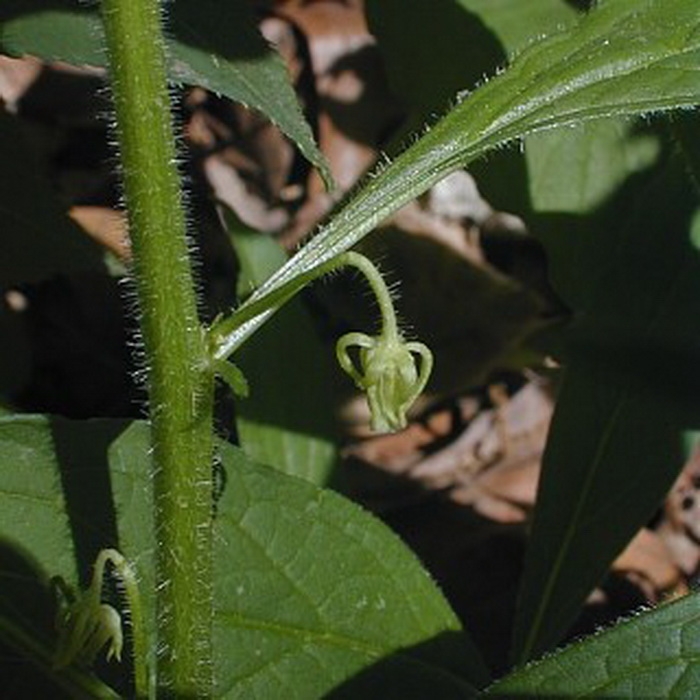
Range & Habitat: The native Green Violet is occasional in most areas of Illinois, except in the NW section, where it is absent (see Distribution Map). Overall, it is more common in hilly areas of southern Illinois than in the glaciated areas of northern Illinois. Habitats include moist to mesic deciduous woodlands, wooded slopes, shaded terraces along streams, and damp ravines, particularly where calcareous rocky material is close to the surface of the ground. This species is fairly conservative and normally found in high quality woodlands where the original ground flora is still intact.
Faunal Associations: Very little is known about floral-faunal relationships for this species. Robertson observed a green metallic bee, Augochlorella striata, sucking nectar from the flowers; however, insect visitors to the non-showy flowers are uncommon. The polyphagous insect, Acrosternum hilaris (Green Stink Bug; a.k.a. Chinavia hilare) sucks juices from the foliage. White-Tailed Deer often chomp off the tops of this plant. It is possible that upland gamebirds and the White-Footed Mouse feed on the seeds, which are rather large in size.

Photographic Location: A shaded ravine in Vermilion County, Illinois.
Comments: This atypical member of the Violet family is primarily a foliage plant; the small flowers are largely hidden by the leaves and non-showy. The seed capsules of Green Violet are very similar in appearance to those of other violets (Viola spp.), although they are somewhat larger in size; the seed capsules of both the Green Violet and other violets divide into 3 longitudinal sections to release their seeds. There is also some similarity in the structure of their respective flowers. Looking at this plant, most people would never guess that it is a violet.
The blooming period occurs from mid-spring to early summer and lasts about 1–1½ months. There is no noticeable floral scent. Each fertile flower is replaced by a seed capsule about ½–¾" long. The seed capsules are light green, ovoid-oblongoid in shape, and hairless. At maturity, each capsule splits into 3 sections to release the seeds. The root system is is fibrous and rhizomatous. Clonal colonies of plants are occasionally formed from the rhizomes.
Cultivation: The preference is dappled sunlight to medium shade, moist to mesic conditions, and a rich loamy soil with abundant organic matter (e.g., fallen leaves). Some rocky material (e.g., limestone) is also tolerated. The pH of the soil should be mildly acid, neutral, or basic.

Range & Habitat: The native Green Violet is occasional in most areas of Illinois, except in the NW section, where it is absent (see Distribution Map). Overall, it is more common in hilly areas of southern Illinois than in the glaciated areas of northern Illinois. Habitats include moist to mesic deciduous woodlands, wooded slopes, shaded terraces along streams, and damp ravines, particularly where calcareous rocky material is close to the surface of the ground. This species is fairly conservative and normally found in high quality woodlands where the original ground flora is still intact.
Faunal Associations: Very little is known about floral-faunal relationships for this species. Robertson observed a green metallic bee, Augochlorella striata, sucking nectar from the flowers; however, insect visitors to the non-showy flowers are uncommon. The polyphagous insect, Acrosternum hilaris (Green Stink Bug; a.k.a. Chinavia hilare) sucks juices from the foliage. White-Tailed Deer often chomp off the tops of this plant. It is possible that upland gamebirds and the White-Footed Mouse feed on the seeds, which are rather large in size.

Photographic Location: A shaded ravine in Vermilion County, Illinois.
Comments: This atypical member of the Violet family is primarily a foliage plant; the small flowers are largely hidden by the leaves and non-showy. The seed capsules of Green Violet are very similar in appearance to those of other violets (Viola spp.), although they are somewhat larger in size; the seed capsules of both the Green Violet and other violets divide into 3 longitudinal sections to release their seeds. There is also some similarity in the structure of their respective flowers. Looking at this plant, most people would never guess that it is a violet.
0
0
文章
张祥明
2018年05月07日

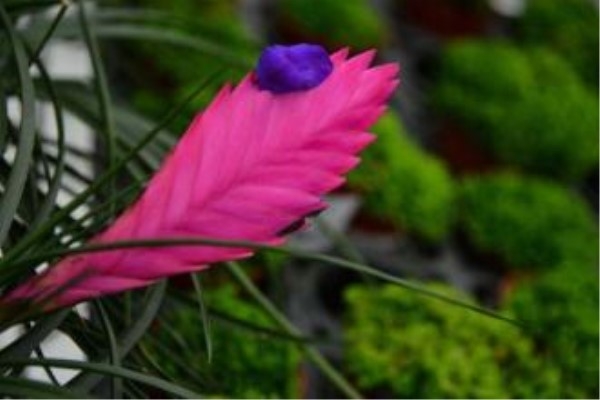
一、原因及措施:
1、光照:
要找到干枯的原因才能对症治疗,叶子干枯很可能是阳光强度所致,很多时候将铁兰放在强光下被直线照射是不明智的行为,因为铁兰很怕晒,却喜欢相对阴暗,温度不高的地方,所以,叶子枯了就应该立刻转移养殖的地方,放在半阴凉的地方最合适。

2、温度:
有些人在养殖时最容易马虎大意,甚至将铁兰放置在低温环境内,连最基本的养殖常识都没有掌握,就会让铁兰在低温下受到冻伤从而就会导致叶子干枯,所以,应该及时调控室内温度,保持在16℃以上。
3、浇水:
叶子干枯其实与浇水有着直接的关联,尤其是在比较炎热的夏天是需要给铁兰喷水的,即便是在冬季也要保证花叶和盆内土壤的湿润,如果做不到干枯也是在所难免的。所以我们要经常观察盆内情况,及时为它补水。
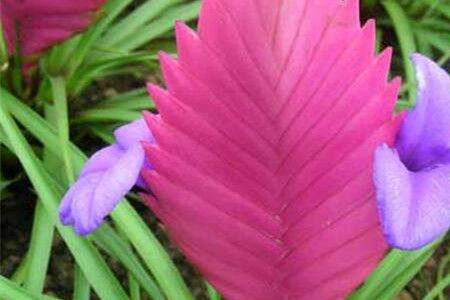
二、注意事项:
养殖铁兰时尽量不要为了一时的省时省力而给它们施肥太多,每次都要定量,不然铁兰不仅叶子会蔫巴枯黄,甚至大有被烧坏的可能,因此要多留意施肥问题,一些害虫也可以让叶子干枯,所以,进行杀虫措施也是重中之重,想要养好铁兰遵循正确的养殖模式就万无一失了。

0
0
文章
权问薇
2018年05月07日

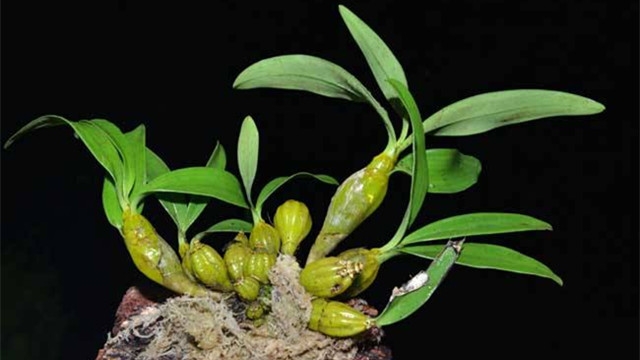
一、水培方法
1、选择水培铁皮石斛
水培之前,首先要选择适合水培的植株,以生长2年以上并且已经驯化的铁皮石斛幼苗最佳,或剪掉老植株上的部分枝条和花苞也可以。
2、处理水培植株
将选择好的植株仔细清洗一下,将其上面的泥土洗掉,并剪去上面的烂根、老根或病根,之后就可将它泡在放有多菌灵的溶液中,以防根部伤口受到病菌感染,消毒好之后,就可将它放在阴凉地方晾干,就可进行水培了。
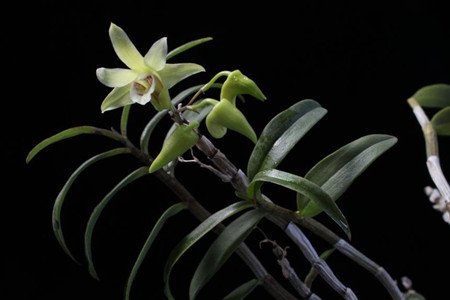
3、准备水培容器
选择水培容器时,最好用透明度较好的瓶子,并且瓶子上面还带颈,因为这样就可以让铁皮石斛完全融入到水中,如果找不到这种瓶子的话,可以用胶带将其固定住。
4、进行水培
将准备好的水培植株放在瓶子里面,然后就可以向里面开始添加水分,水里可适当添加一些植物营养液,通常用氨基酸或者酵素,苹果醋也可以,但不管是哪一种,都不可放太多,只需一小瓶盖即可。如果你不想用这些,也可以直接买营养液。
5、及时换水和营养液
水培时,要注意定时给它换水和营养液,如果是春天,时间以7到10天最好,如果是冬天就可相隔时间长一些,因为此时温度低,植物消耗的营养少,以15天左右换一次最佳。到了夏天时,它的呼吸量大,营养消耗也快,所以相隔4到5天就需换一次营养液和水,这样才能将其水培好。
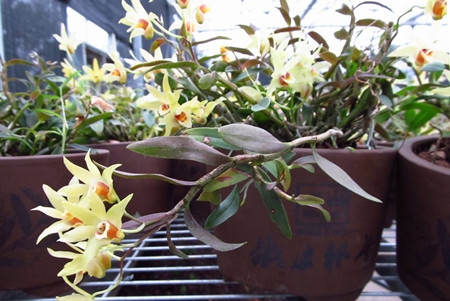
二、注意事项
水培它时,要注意根不能完全留在水里,要留出三分之二在外面。另外还要保证好的通风条件。
1
0
文章
巴黎铁塔
2018年05月07日
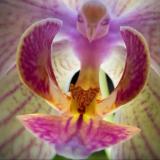

一、原因
1、水分不当
它要是蔫了可能是因为它缺少水分要先看看它的土是否已经干透了。同时要是因为水太多了,它也是很容易蔫掉的,因为它需要透气,但是水太多了,根没有办法透气就会导致叶吸取不到水,就会蔫掉。
2、土壤板结
还需要检查一下它的土是不是不太松软,要是土不够透气的话,根就会长得不健康,这也是它的叶蔫掉的一个重要原因。

3、肥害
要是给它加了太多的肥料,它就会发生肥害,根就会被烧掉,要是情况十分严重的话,它就会整株都死掉,叶更是会蔫掉。
4、温度太高
要是气温不适合它的成长的话,比如说气温太高了,它的水分就会很快的挥发掉,所以就会蔫掉。

二、解决办法
1、第一要是因为缺少水分导致的,应当要立马给它进行洒水。第二,需要小心的是,虽然它偏爱湿润的区域,但是要是太湿了,它就会很容易烂掉根部。
2、第一要是因为土壤不松软导致的,应该立马给它把土给松一下,加一些肥进去。第二,要是板结十分严重的话,干脆给它更换新的盆和土,调配好肥料。
3、第一要是因为肥太多的话,用水给它把土冲洗一遍或者给它重新换土。第二其实它半个月给它洒一次肥就足够了,因为它本身对肥的需求不是很大。
4、第一要是气温太高,应当立马把它移到凉快的区域进行缓解。第二它比一般的植株都更加能够适应寒冷和酷暑,但是要是气温变化太快,它就会蔫掉。
0
1
文章
权问薇
2018年05月07日


1.酸碱性
这一种植物所需要的土壤是酸性的,南方的土地本身就是偏酸的,所以要求比北边宽松。但是北边的土壤都是偏碱性的,用这样子的土来养它,很容易造成它的死亡,所以北方的土还是有需要找特定的,而且在配置好之后可以每一个月浇一次矾水,这样子可以控制它的酸碱度。

2.配置
我们不能直接使用园土来养它,可以考虑用一定的配置方法,比如说用腐殖土还有沙子以及园土混合在一起,亦或者用泥炭还有沙子混合在一起,除此之外,还可以用园土和堆肥土以及沙混合。除此之外,我们也可以去山林里找一些旧土来培养它,我们要知道植物对于土的要求并不一样,这也意味着配方是可以更改的,而且可以随意搭配。只要保证里面充满了营养物质就好。

3.蚯蚓
很多人认为将蚯蚓放入土壤里对植物有好处,但是事实上这需要取决于植物是待在大地里还是盆栽里。盆栽本身就只有有限的空间,如果把蚯蚓放入,它就会在里面穿梭,植物的根和土就不会在一起,根的吸收会受到影响,植株也会不健康。
0
1
文章
权问薇
2018年05月07日


1.种类
比较常用的植株花盆有几种,首先就是塑料盆。这一种盆比较简单,价格也便宜,排水透气的功能并不低。第二种就是陶瓷的,它要比塑料盆好一些,对于这一种植物来说,它应当是最佳的。其次,我们可以使用素烧盆,这一种盆的透气排水也很好,价格也比较便宜,对米兰来说挺合适。如果用的是紫砂盆的话,假如它有一层釉面,我们就可以多使用河沙,这样透气和排水会增加。我们不推荐大家使用金属的盆。

2.大小
大小也是很需要控制的一点。这一种植物不需要多大的盆,但是植株长大了的话还是要选择一个更大的盆。起初的时候可选取半径二十公分左右的盆,等它长大了就能用再增加大小的,再大又要换盆。我们要注意不可以选与植株不合适的大盆,因为盆子太大苗太小,苗消耗水的能力并不强,而盆里面会积累很多水,透气不好,根也容易烂掉。当然,太小的话,根很难舒展来来,这也是不行的。

1
2
文章
韩塞
2018年05月06日

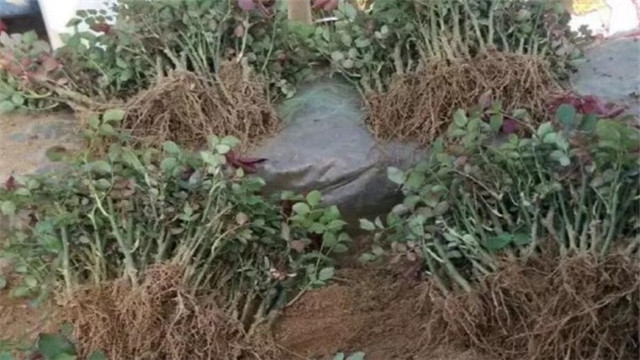
花为什么会烂根
花花草草黄叶、掉叶、掉花、打蔫这些情况真是太常见了,很多花友都不敢相信,这就是烂根的信号
烂根的原因也非常明确,大家来看看自己有没有中招吧:
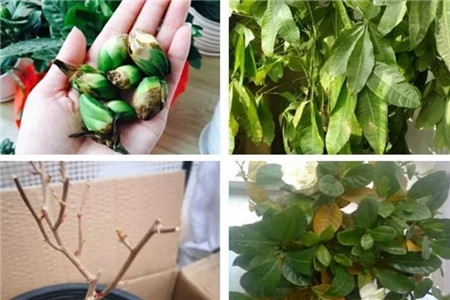
1、浇水过多
浇水过多是最直接的原因,有些花友太勤快,今天浇,明天还浇,花明明已经喝饱了,剩余的水在花盆里泡着根,不烂才怪啊
2、盆土不疏松
花土压的太实、太紧,根在里面都不透气儿,本来就憋气快不行了,再浇点水,只能是“火上浇油”
3、根伤了
很多新买的花容易出现烂根的现象,其实根已经伤了,新盆栽一般先在苗圃里分株,分株带伤后买回去只能是伤痕累累
4、位置不通风
通风的环境有利于水分的蒸发,花吸收剩下的水就不用担心了,有些花友放在角落里,真的是“置于死地”咯
烂根后怎么办
茶花、茉莉、桂花、木本月季、发财树、栀子等等的烂根表现和处理方式大致一样,花花这里就以茶花为例吧

1、烂根的表现
根和花、叶都是一体的,当叶子耷拉发蔫、花无故掉落、叶子也掉了,这些都是根出了问题
2、挖出检查、清理烂根
怀疑烂根就赶紧挖出来看看,小心把根部多余的土清理掉(可以用水冲掉),白色根一般是健康的,黑色、软烂的都是坏掉的
把腐烂的根剔除,不管大小根系一直剪到新鲜的根部为止,清理完泡上20分钟多菌灵溶液杀菌
如果90%以上的根都烂了,就直接剁掉根部,只要木质花杆,泡生根水生根吧,根据花的种类,20-30天左右生根
3、换土再种
再次栽种需要用比较疏松的土,普通园土混合沙子就非常好,为了杀菌可以先用开水淋一下,晾晾再用
4、后续浇水与光照
重新栽盆后浇透水,放在阴凉通风的地方,避免暴晒,大概5-8天缓和后再搬到阳台缓晒
怎样避免烂根

5
3










